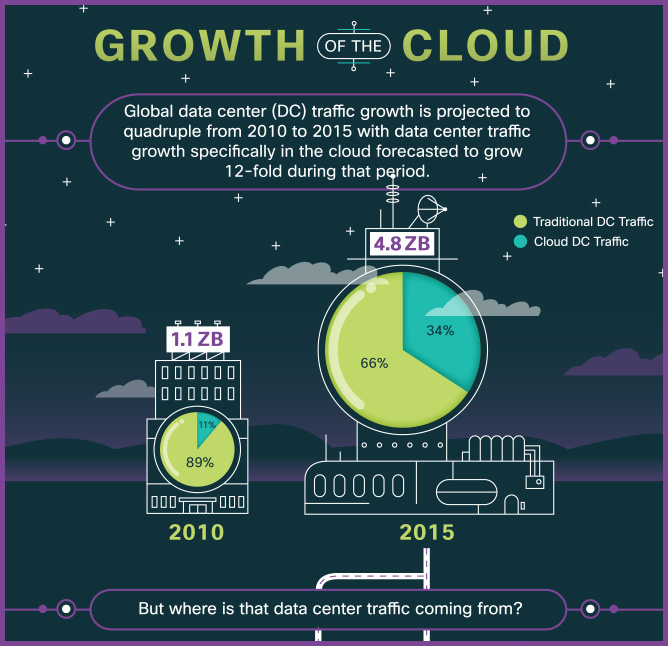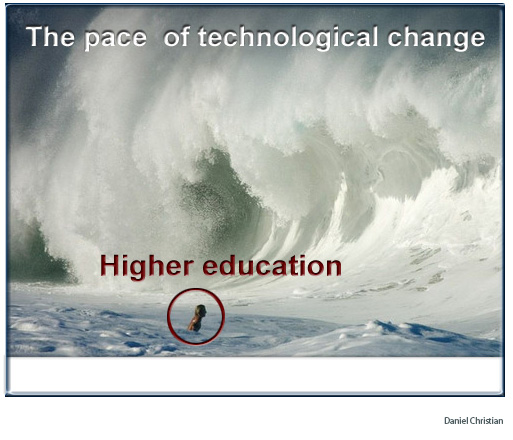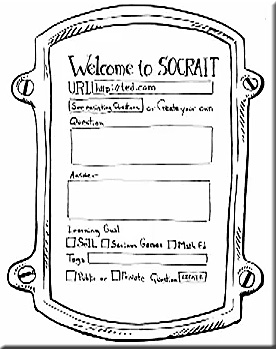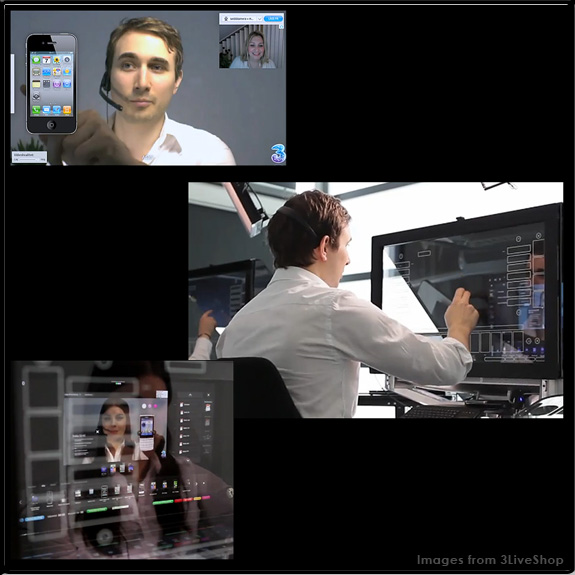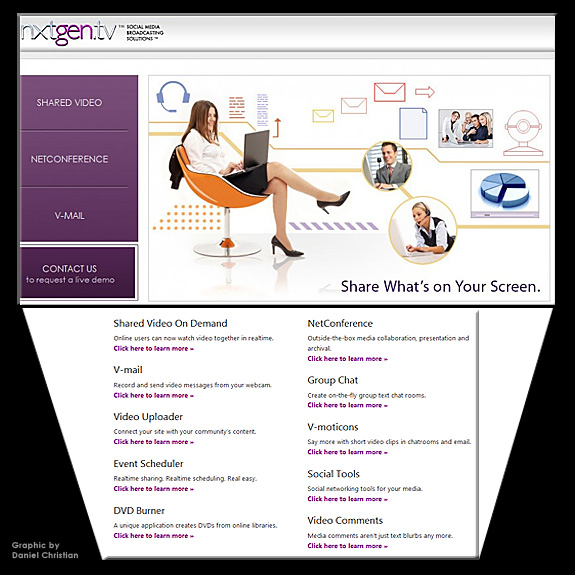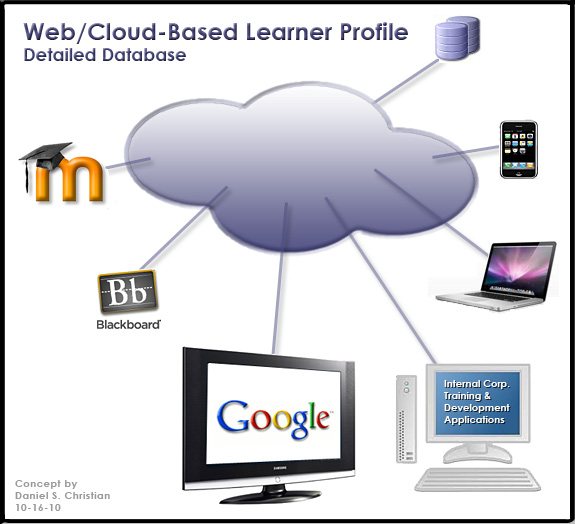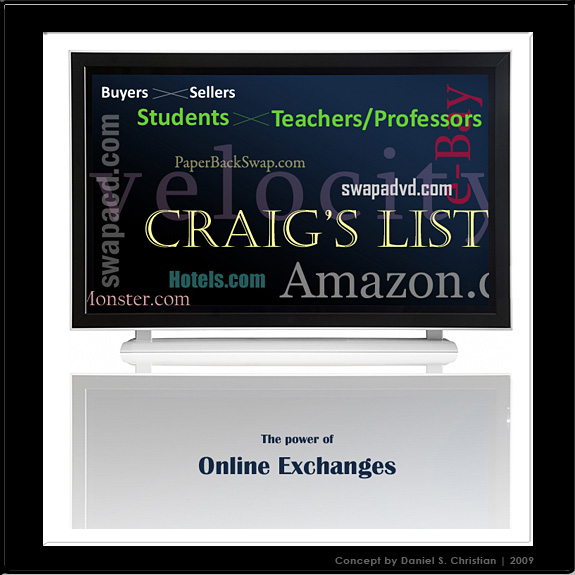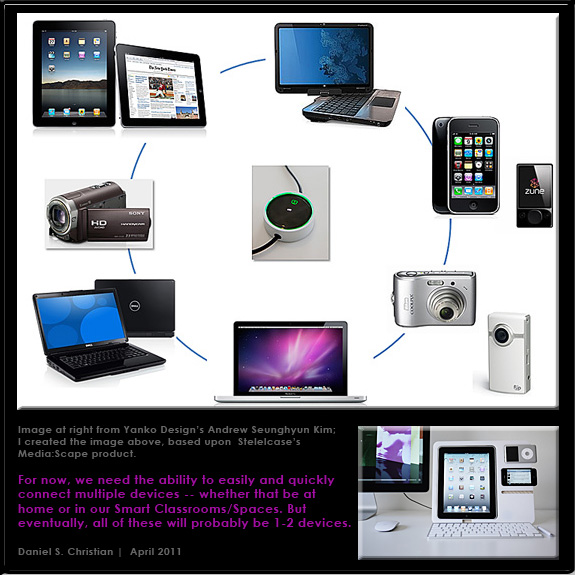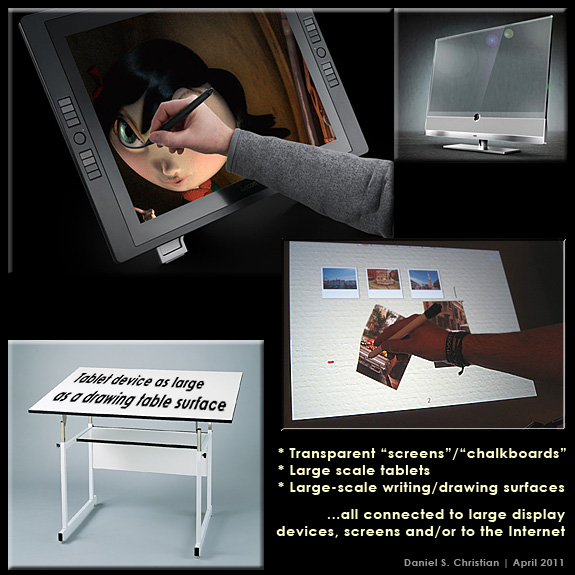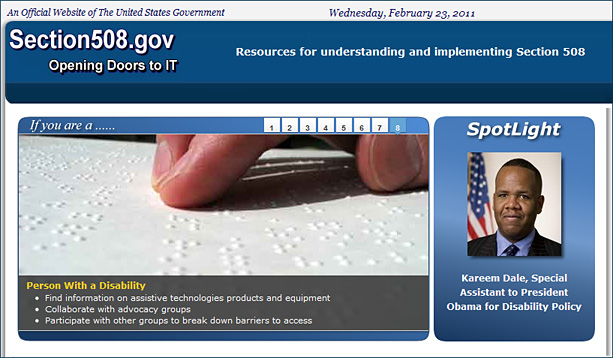4 university libraries move down the virtualization path — from ConvergeMag.com by Tanya Roscorla
Reengineering IT in higher education — from campustechnology.com by John Waters
Excerpt:
Higher ed IT is going the way of the TV repairman, eventually becoming anachronistic maintainers of commodity systems–if university and college technology managers and chief information officers don’t reclaim their rightful place as innovators. So proclaimed William G. “Gerry” McCartney, CIO at Purdue University, who spoke to attendees at the annual Campus Technology 2011 conference last week in Boston. McCarthy said he wants to see nothing less than a new kind of higher ed hybrid, one that transforms colleges and universities into “producers as well as consumers.”
From DSC:
I have had the perspective for decades now that those organizations who utilize technologies the best will be the winners (sorry for the competitive way of framing this topic, but it’s true).
“Keeping the systems running” in the world of IT is important — but the strategic use of IT has arguably become more important as the Internet, changing landscapes, and budgetary pressures continue to disrupt higher education.
In the 21st century, if you want a successful organization, you must have at least one visionary technologist — who understands your business — on your organization’s decision-making board; if not, good luck to such an organization in the future. If your organization minimizes and underestimates the power of technology to disrupt your business, things may not turn out too good for your organization in the future.
Also see:
- Technology not a priority for most college administrators, report finds — from ConvergeMag.com by Tanya Roscorla
Aruba MOVE delivers high-quality video simultaneously to 100 iPads in a single classroom at the University of Ottawa — from ArrubaNetworks.com
Multimedia applications included Apple Facetime and AirPlay, Blackboard Mobile™ Learn, Distribution Access Learning, HaiVision and Turning Technologies
Excerpt:
SUNNYVALE, Calif., June 13, 2011 – Aruba Networks, Inc. (NASDAQ: ARUN) today announced that it and several application partners delivered the next-generation classroom experience at the University of Ottawa. Validated by the university information technology (IT) department, the classroom experience consisted of six leading multimedia educational applications delivered to 100 iPads, concurrently. Each of the applications was delivered simultaneously to all 100 iPads with the highest quality and without any noticeable jitter, delay or frame loss. 100 percent of the iPads passed the multimedia Service Level Agreement (SLA), as measured by VeriWave WaveInsite, which was also used to objectively verify sustained performance of 1Mbps of multimedia streaming to each iPad.
From DSC:
I think there may be something here for the Smart Classrooms of the future. I can’t help but think of some of our courses in astronomy, for example, and that I think that sometimes we are using the wrong technologies to display images and videos to our students. Without investing an enormous amount of money on very high-end projection systems, we lose too much detail with a variety of images that feature galaxies, constellations, etc. with a projected image.
What about if a student could control where they want to zoom in on an image — and not lose any resolution or brightness? What about if they had such high res images available for viewing directly on their iPads? Sounds very interesting to me.
Also see:
- Haivision Acquires KulaByte and MontiVision; Forms Internet Media Division
Haivision driving toward $50 million revenue with new division combining Internet streaming and cloud transcoding to enable over-the-top media delivery
MONTREAL and CHICAGO — July 21, 2011 — Haivision Network Video, a leading provider of the most advanced video networking, digital signage, and IP video distribution solutions, today announced that it has acquired both KulaByte Corporation of San Marcos, Texas, and MontiVision Imaging Technologies based in Germany. The technologies of both companies, including advanced encoding, transcoding, cloud computing, and workflow solutions, will be combined to form Haivision’s new Internet Media Division.
But how do you move forward with such an innovation, when there isn’t definitive proof that it will work? That is the key question educators and policymakers are grappling with.
Under the education priorities of President George W. Bush’s administration, the catchphrase “research base” was drilled into educators” heads when it came to new programs and initiatives. If it wasn’t research-based, it wasn’t worth adopting.
But technology innovations occur so rapidly that it’s often impossible to do scientifically based trials proving effectiveness before schools embrace new approaches. Think of social-networking tools, iPads, and e-readers. And what other new digital-learning tools might also emerge well before scientifically based research can justify their use in classrooms?
Also see:
- ‘Hybrid’ Charter Schools on the Rise — from Education Week’s Digital Directions by Michelle Davis
New charter school models are combining online-only learning and face-to-face instruction
From DSC:
From my 20+ years of experience with working with a variety of technologies, while there is an element of risk taking to implementing technologies, there are also enormous payoffs if organizations implement the appropriate technologies.
But how can we select and implement the most effective technologies? This is where we need to rely on our technologists out there and keep them growing in the knowledge of “the business”, not just the technologies. Tell them what you are trying to achieve, and they can greatly assist. No one can hit 100% — but good technologists can get you into the right game and into the right ballpark (if not exactly lining up the exact right players, which may change or take some tweaking).
NOTE:
Don’t rely on technologists who only see their jobs as keeping the systems running. Though we need technologists who keep the infrastructures up and running, at this juncture what organizations really need are visionaries who are knowledgeable about the needs of the business (as well as the technologies), and those who are willing to explore, experiment, and take some risks…i.e. to lead….to be instrumental in forming strategies and visions. The areas outside IT need to be aware of how critical technologies are becoming in their core strategies and plans. It’s not the same ball-game as it was. Those who use technologies strategically will survive and thrive.
It should be noted that there have been risks inherent in maintaining the status quo — a 20%-30% dropout rate (in K-12) across the United States is pretty risky too, at least in my mind.
Report: The most common web browsers and browser versions today — from royal.pingdom.com
Excerpt from this 6/16/11 posting:
The web browser market is an ever-changing landscape. It can sometimes be rocky ground for web designers and web developers trying to make their websites and services work for all the various browser versions available out there. It’s challenging work, to say the least.
That’s why it pays to be aware of what the web browser market looks like, and stay up to date. How many are using the various browsers out there? How many are using the latest versions? Which versions are the most common? How big an audience may you be annoying if your site isn’t perfect in a specific browser version?
Those are all questions you’ll want to answer, and here is what the situation looks like right now, in June 2011, based on the traffic to more than three million websites and billions of page views.
-My thanks to Mr. Michael Haan, Calvin College, for this resource
Also see:
- Is Ed Tech Accessible Enough? — from CampusTechnology.com by Bridget McCrea
Technology opens doors for college students and teachers, but it’s not always adequate for non-traditional learners, despite meeting existing accessibility standards.
Helen Lee knows what it’s like to get excited about a new piece of classroom technology. But as assistant professor for Western Michigan University’s Department of Blindness & Low Vision Studies in Kalamazoo, Lee also is familiar with the bitter disappointment that comes when her students can’t use some or all of the technology.









